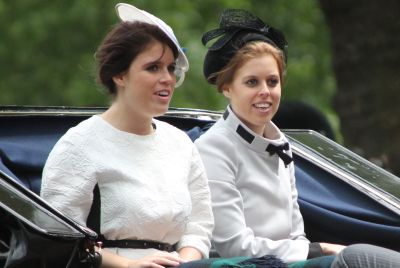India celebrates its 74th Republic Day – A look back at India's Colonial Past and Relations with the UK
India celebrated its Republic Day on the newly renovated 'Kartavya Path', tearing the old colonial relics, ending its relationship with the British Empire and redefining its own democraticheritage.
On 26th January 2023, India celebrated its 74th Republic Day. The day is marked on the anniversary of the day when the constitution of India went into effect turning India from a Dominion to a Republic. This day is especially significant to India's Independence history as it marks the end of the British Empire's rule in India after it got its Independence on the 15th of August 1947. This Republic Day was even more significant as India is celebrating its 75th year of Independence from the British Empire known as 'Azadi ka Amrit Mohotsav' i.e., 'Festival of the Elixir of freedom'.

History of India's Independence and Significance of the Republic Day
The Independence of India act 1947 was a law passed by the British parliament that divided India into 2 independent Nations Union of India and the Dominion of Pakistan comprising West Pakistan (Modern-Day Pakistan) and East Pakistan (now Bangladesh which was liberated in 1971). The act received a royal accent on 18 July 1947, and it was decided that on 15th of August 1947, the 2 nations would come into being. However, this Independence was not complete Independence from the British Raj as India still was under the Dominion status, meaning the British Empire still had a lot of influence on the Indian government. India was still considered a realm under the Commonwealth of Nations and the British Viceroy remained the ruler of India and had control over its armed forces. The powers of the government of India were limited by this until the adoption of the Constitution of India on the 26th of January 1950.
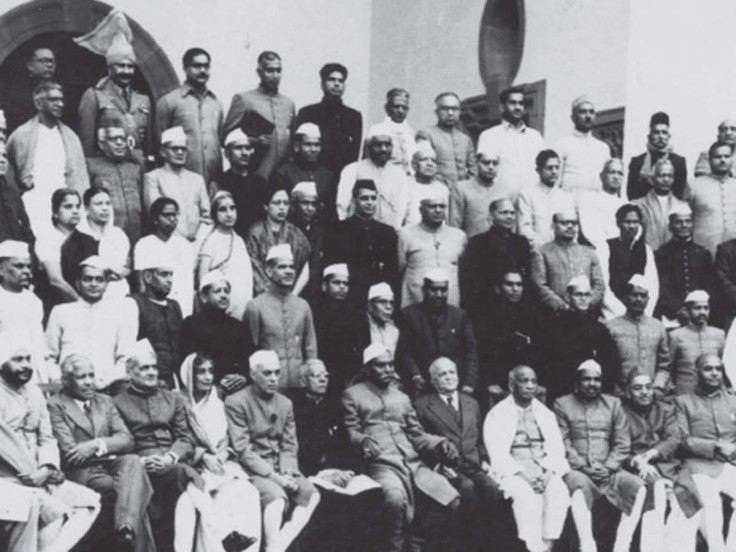
The Constitution of India was passed on 26th November 1949 by the 299-member constituent assembly responsible for drafting the constitution. The assembly met over a period of 2 years 11 months and 18 days before adopting the constitution. The assembly was led by important Indian leaders including Dr Rajendra Prasad, President of the Constituent Assembly, Dr B.R. Ambedkar, chairman of the Drafting Committee, also known as the architect of the Indian Constitution. Dr Ambedkar was an alumnus of the London School of Economics and a social rights champion who led the struggle of the Dalit Community (untouchables in the Indian caste system during the colonial era). It was decided to adopt the constitution on 26th January to coincide with the anniversary of the historic 1930 Congress Session where Indian leaders rejected an India under dominion status and decided 'Purna Swaraj' i.e., complete sovereignty and Republic status for India as its goal.
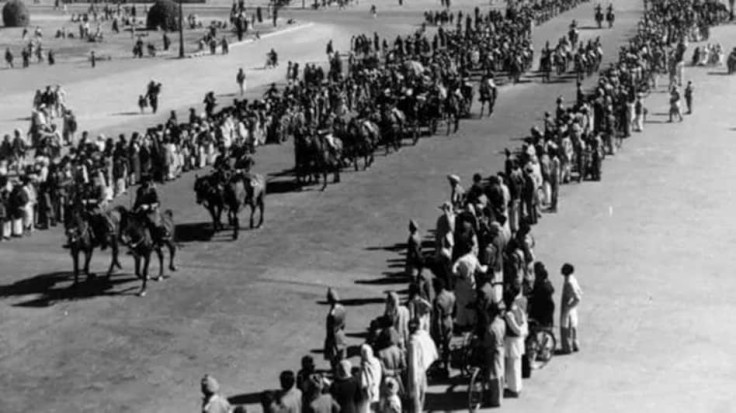
Hence on 26th January 1950, the constitution of India was adopted, and India become a Republic. This meant the official head of state of India would no longer be the British monarch but the President of India. India was now a completely independent, democratic, and sovereign country free of all influence of the British empire and the commonwealth. Dr Rajendra Prasad was elected as the first President of India, which is a constitutional executive position, while the Prime Minister of India would be the head of the legislative branch and lead the government.
Decolonization in Modi's India
Republic Day parade is held in the national capital of New Delhi's newly renamed ceremonial boulevard 'Kartavya Path' (the path of responsibility) from its former name 'Raj Path' (The path of rule). This pathway pre-independence was known as the Kingsway and was the most important road in Delhi which led to the top of the Raisina Hills where the present-day Rashtrapati Bhavan i.e., the official residence of The President of India is situated.
The Rashtrapati Bhavan was formerly the viceroy's estate which post-independence was converted to be the official residence of the Indian Head of the state i.e., the President. The renaming and renovation of the 'Kartavya path' and the construction of a new central vista a new government building complex along the Kartavya path along with the new parliament building are all in alignment with Prime Minister Narendra Modi's mission of decolonization of cultural relics in the Indian democracy.
The Republic Day Parade 2023 Key Highlights
The Republic Day parade is also key to presenting the military might of the Indian Armed Forces and features displays of different weapon systems, vehicles, and aircraft in service of the Indian army, navy and air force. The parade also holds marches of the different regiments of the armed forces and presents cultural tableaus from different states of India to represent their cultural diversity, unity, and strength.
The Republic Day celebration began with Prime Minister Narendra Modi's visit to the National war memorial where he was accompanied by Defense minister Rajnath Singh, Chief of Defense Staff General Anil Chauhan, Chief of Army Staff General Manoj Pande, Chief of Naval Staff Admiral R Hari Kumar and Chief of Air Staff Air Chief Marshall VR Chaudhari where they paid homage to the 26000 martyred armed forces service men and women.
The proceedings of the Republic Day then began on the Kartavya path with the reception of dignitaries with the arrival of Prime Minister Narendra Modi, Vice President of India Jagdeep Dhankhar and President of India Droupadi Murmu. The Indian flag was hoisted by the President followed by the National Anthem of India along with a 21-gun salute in attendance of over 45000 people. The Republic Day parade featured 6 Indian Army contingents from the 61 cavalries, The mechanized Infantry Regiment, the Punjab Regiment, The Maratha Light Infantry Regiment, the Dogra Regiment, the Bihar Regiment and The Gorkha Brigade. The Indian Navy, Indian Airforce, Indian Coast Guard, Central Armed Police Force, Delhi Police, National Cadet Corps (NCC), and National Service Scheme (NSS) contingents also marched in the Parade.
The parade for the first time featured all made in India Military equipment which included the Indian Army's Battle Tank ARJUN, army aviation Corps Advanced Light Helicopters, Infantry Combat vehicle BMP-2 Sarath, NAG Missile System (NAMIS), k-9 Vajra Tracked Self Propelled Howitzer Guns, BrahMos missiles, Mobile Microwave Node and Mobile Network Centre in their mechanized Columns. The Airforce Contingent also showcased the Light Combat Aircraft Tejas MK-II, Light Combat Helicopter 'Prachand', Airborne Early warning control aircraft NETRA and C-295 Transport Aircraft.
The parade also featured various tableaus from the Defense Research and Development Organization (DRDO), 17 states and union territories and other ministerial departments showcasing the rich cultural heritage, diversity and unity of India. The parade came to a conclusion after a cultural performance by 479 artists chosen from across India to perform different classical and contemporary dance forms on the theme of "Power of Women".
Chief Guest on the Republic Day 2023
This year India hosted Egyptian President Abdel Fateh El-Sisi as their chief guest for the Republic Day Parade. President El-Sisi received the ceremonial Guard of Honour at the Rashtrapati Bhavan on Wednesday the 25th of January where a state banquet was hosted in his honour by the President of India Droupadi Murmu and Prime Minister Modi. The invitation of a foreign head of state as the chief guest every year on republic day is an essential diplomatic practice used by the Indian Government to show respect to their international partners and deepen ties among the people. This invitation also provides an opportunity between India and the guest nation to discuss key economic, political, military and other mutual interests bilaterally.
The process of selection and invitation of a guest of honour is long and rigorous and largely depends on India's relation with the invitee nation and its leaders. India and Egypt share a historic tie from the days of the Non-Alignment Movement (NAM) where they lead a third non-aligned front approach for newly decolonized nations caught between choosing international alliances in the 1950s and 1960s in the Cold War era. Egypt was one of the founding members of the NAM alongside India, Ghana, Yugoslavia and Indonesia. Indonesian President Sukarno, who was one of NAM's founding members was the chief guest of the First Republic Day Parade in 1950. Hence the Arrival of Egyptian President El-Sisi re-invokes the shared historic relationship of India and Egypt of a non-aligned third front like NAM during India's 75th year of Independence.
Many world leaders have attended the US President Barack Obama in 2015, Japan Prime Minister Shinzo Abe in 2014, Russian President Vladimir Putin in 2007, and Saudi Arabia's King Abdullah bin Abdelaziz al-Saud in 2006. In 2018 it set a record when it invited 10 Chief guests where the heads of ASEAN States were invited which included 018: Ten chief guests,
Sultan Hassanal Bolkiah, Brunei Prime Minister Hun Sen, Cambodia President Joko Widodo, Indonesia Prime Minister Thongloun Sisoulith, Laos Prime Minister Najib Razak, Malaysiastate Counsellor Aung San Suu Kyi, Myanmar President Rodrigo Duterte, Philippines Prime Minister Lee Hsien Loong, Singapore Prime Minister Prayut Chan-o-cha, Thailand Prime Minister Nguyen Xuân Phúc, Vietnam. This shows the extensive diplomatic ties between India and many superpowers of the world.
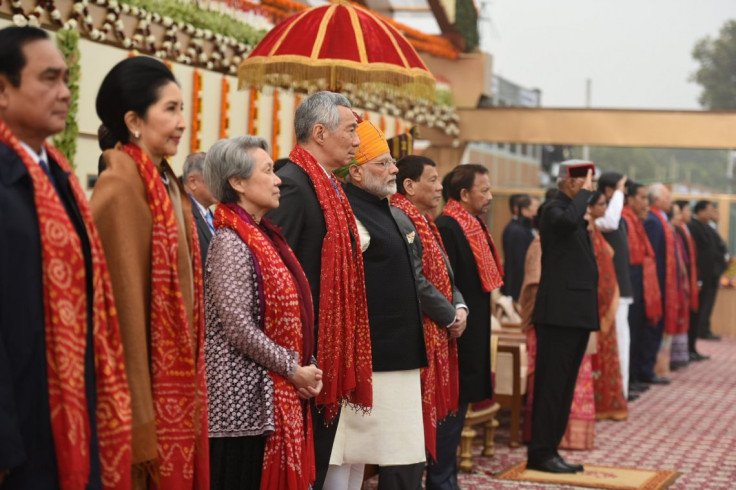
UK's Presence at the Republic Day Celebrations in India.
India on several occasions in the past has hosted dignitaries from the UK for the Republic Day Parade. This included Chancellor of the Exchequer R.A Butler's visit in 1956 as the chief guest for the parade.
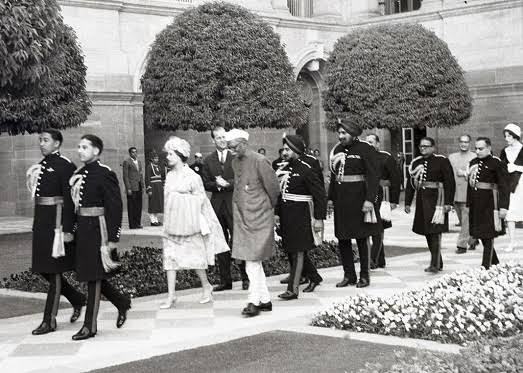
Even the British Royal family have graced the Republic Day celebrations, first in 1959 when the Duke of Edinburgh Prince Philip was invited as the Chief Guest and was accompanied by Queen Elizabeth II. Queen Elizabeth was then invited as the Chief Guest of the Republic Day in 1961 when her tour of Independent India coincided with the celebrations. In 1964 former Viceroy and the then Chief of Defense Staff of the UK Lord Louis Mountbatten was invited as the chief guest. British Prime Minister John Major also attended as the republic day parade in 1993 as chief guest.
After a gap of 28 years in 2021, Prime Minister Boris Johnson was going to represent the UK as the Chief Guest in the Republic Day celebrations in India. However, In early January 2021, Prime Minister Johnson had to cancel his scheduled visit as chief guest in the republic day festivities due to the outbreak of a new coronavirus variant in the UK.
India and UK Relations in 2023
With the UK now having a Prime Minister of Indian descent in the form of Prime Minister Rishi Sunak, India and UK relations are expected to deepen even further. At the moment the UK is facing a recession due to high inflation and a high cost of living crisis as a result of the Covid-19 pandemic and the Russia-Ukraine war which has had a strong impact on the economy. India recently surpassed the UK to become the world's 5th largest economy and has faced the post covid economic crisis quite resiliently.
In such a situation India and UK are working on negotiating a free trade agreement which is aimed to mutually benefit both economies. This trade deal is even more significant after UK's exit from the European Union (EU) and is expected to benefit businesses both in UK and India. So far 6 rounds of talks and negotiations have been concluded as of December 2022, with a possible 7th round of talks to be held in early 2023.
© Copyright IBTimes 2025. All rights reserved.






